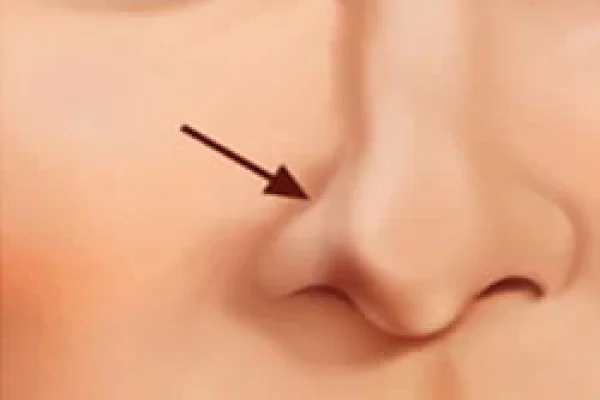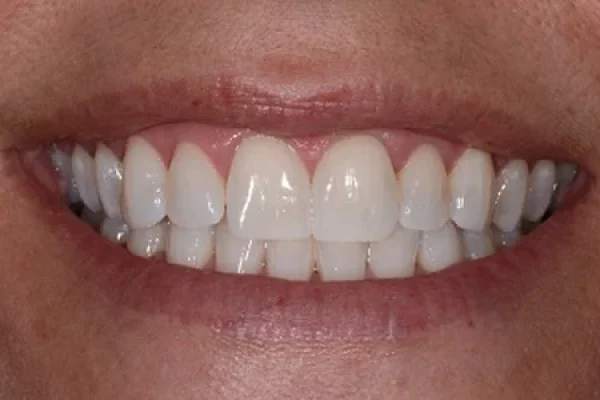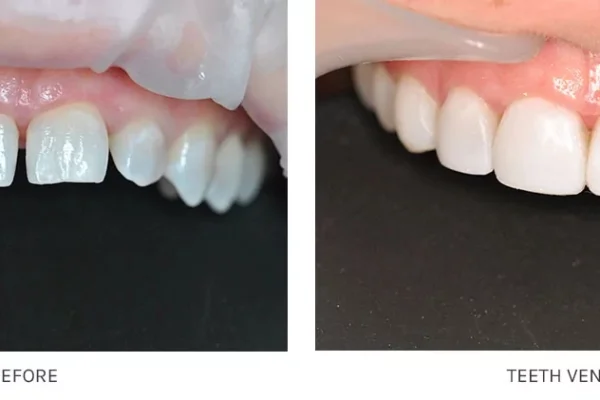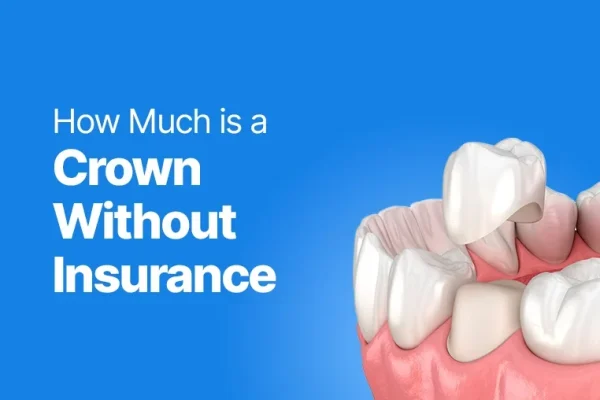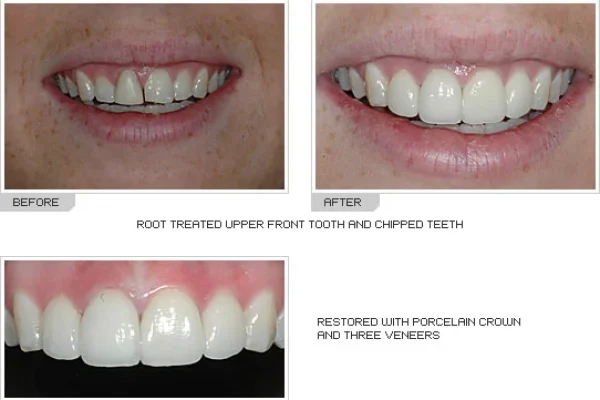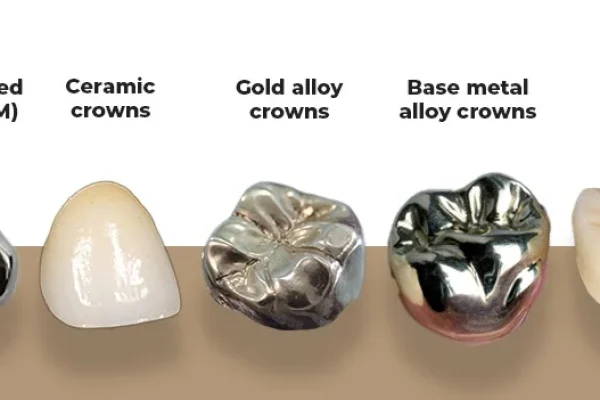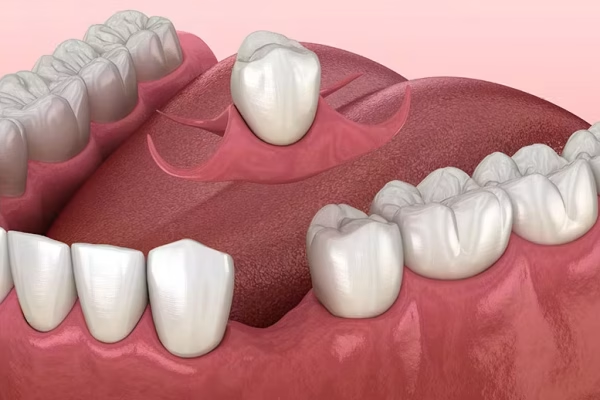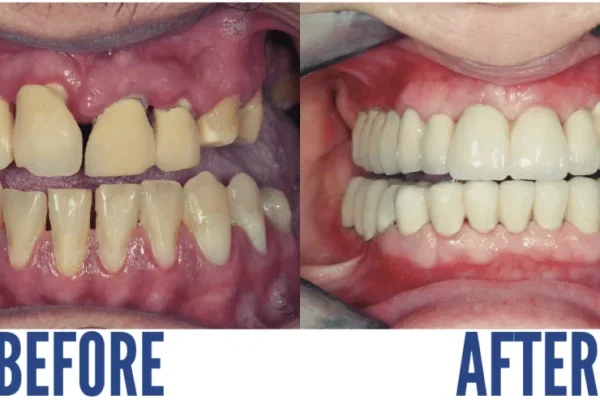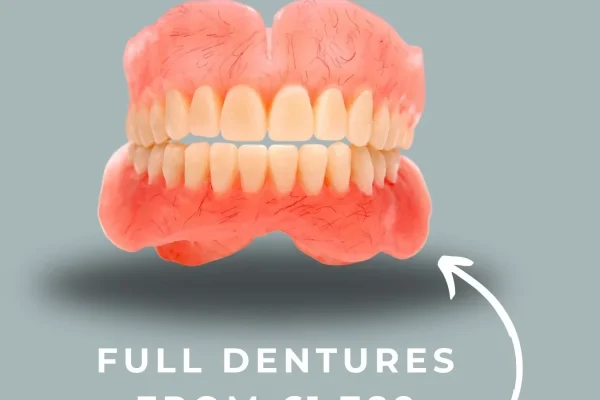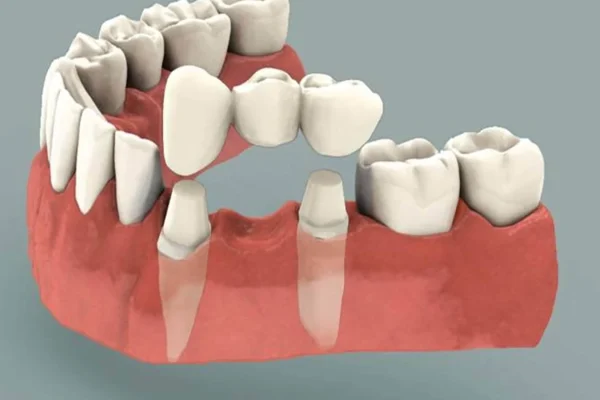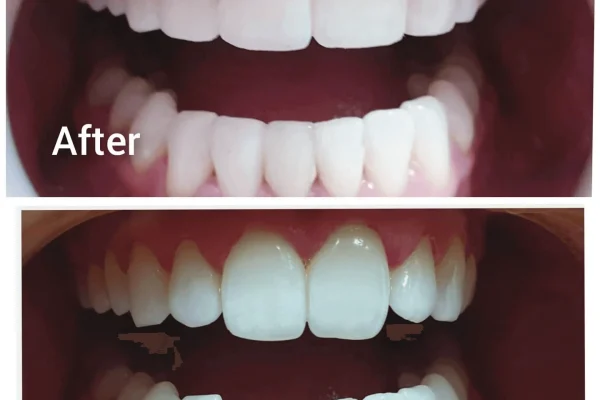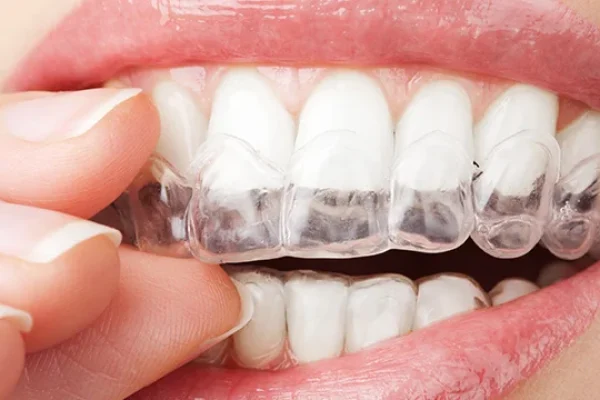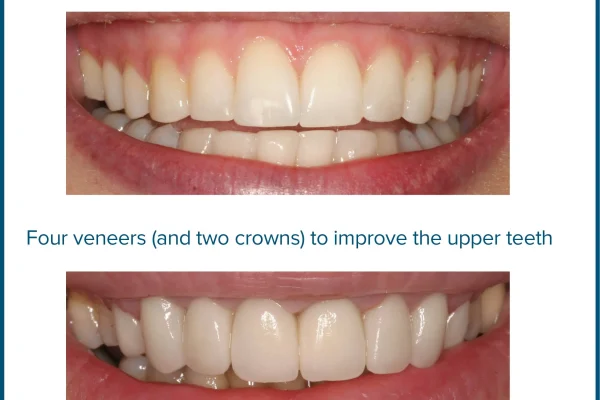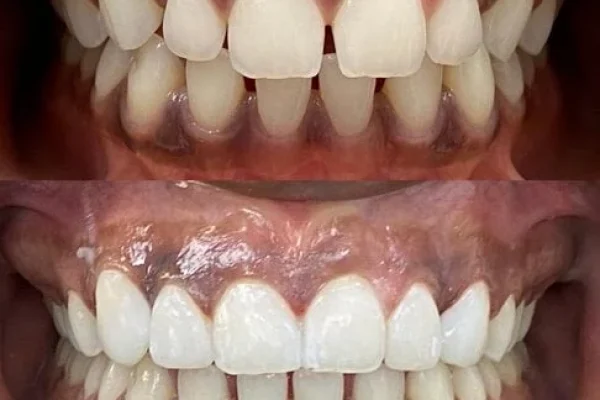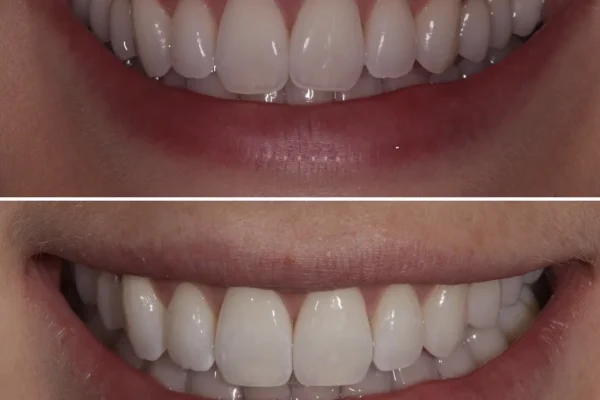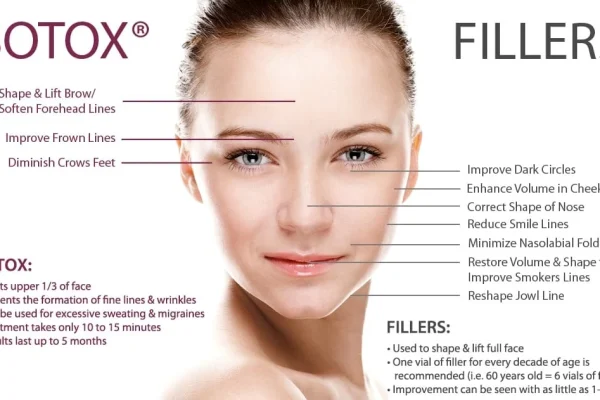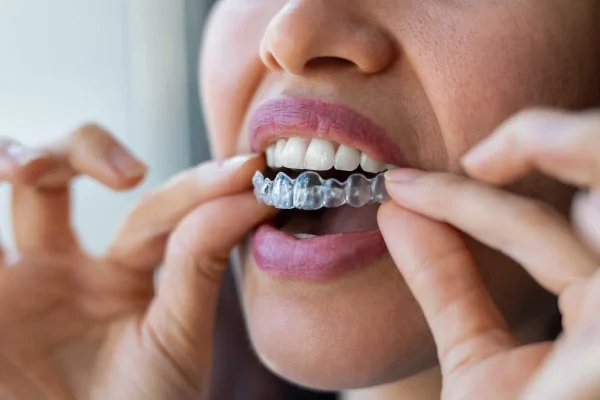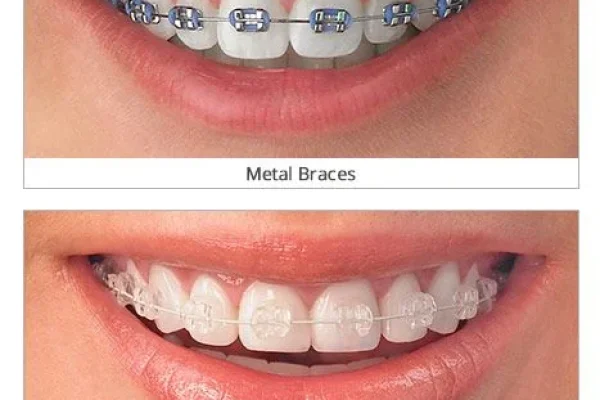
Table of Contents
ToggleKey Takeaways
-
- ‘Cosmetic dentistry dental’ is a specialized field blending art and science to enhance smile aesthetics and significantly boost self-confidence.
-
- It encompasses a wide array of treatments, from teeth whitening and dental bonding to veneers and full smile makeovers, addressing diverse aesthetic imperfections.
-
- Understanding the available treatments, associated costs, and the importance of choosing a qualified cosmetic dentist is crucial for a successful outcome.
-
- The benefits extend beyond appearance, often leading to improved oral health and a profound positive impact on overall well-being.
- This guide explores what defines ‘cosmetic dentistry dental’, the procedures involved, and how it can transform your smile and confidence.
What Exactly is ‘cosmetic dentistry dental’ and How Can It Enhance Your Appearance?
At its core, ‘cosmetic dentistry dental’ is the specialised branch of dentistry that prioritises the improvement of the aesthetic appearance of your teeth, gums, and overall smile. While general dentistry lays the crucial groundwork of oral health—preventing, diagnosing, and treating diseases—and restorative dentistry focuses on repairing damage and restoring function, ‘cosmetic dentistry dental’ takes a step further, viewing your smile through an artist’s lens, backed by scientific precision. It’s about crafting harmony, symmetry, and brilliance. The scope of ‘cosmetic dentistry dental’ is impressively broad, encompassing everything from subtle colour correction through teeth whitening to dramatic transformations involving veneers, crowns, or even orthodontics specifically aimed at aesthetic alignment. It’s not merely about making teeth look “good”; it’s about creating a smile that complements your facial features, skin tone, and even your personality. This pursuit of dental aesthetics has seen a meteoric rise in popularity, driven by a greater societal appreciation for appearance, advancements in dental materials and techniques that offer more natural and durable results, and increased accessibility. The psychological uplift from an enhanced appearance cannot be overstated; a beautiful smile can boost self-esteem, improve social interactions, and even positively influence professional opportunities. It’s this profound connection between a radiant smile and an individual’s confidence that fuels the enduring appeal and transformative power of ‘cosmetic dentistry dental’, making it a sought-after solution for anyone looking to put their best face forward. This field acknowledges that your smile is one of your most prominent features, a critical component of your identity and how you express yourself to the world. Therefore, enhancing it can have ripple effects across many areas of your life, fostering a more positive self-image and encouraging more open, joyful interactions. The meticulous attention to detail, from the precise shade of a veneer to the subtle contouring of a gum line, defines the high standards of ‘cosmetic dentistry dental’.
What is Cosmetic Dentistry According to AACD Dentists and Wikipedia?
When seeking to understand ‘cosmetic dentistry dental’, turning to authoritative sources like the American Academy of Cosmetic Dentistry (AACD) and widely accessed platforms such as Wikipedia provides a well-rounded perspective. The AACD, a leading organisation for cosmetic dental professionals, defines cosmetic dentistry as
“dentistry aimed at creating a positive change to your teeth and to your smile.”
They emphasise that it’s a field demanding a unique blend of artistic skill and rigorous scientific knowledge. AACD dentists are often at the forefront of innovation, having pursued extensive post-graduate training in aesthetic procedures, materials science, and smile design principles. Their definition underscores a holistic approach, considering not just individual teeth but the entire facial harmony, the way the smile complements the eyes, lip line, and overall facial structure. The AACD also plays a crucial role in educating the public about the possibilities of cosmetic dentistry and in accrediting dentists who demonstrate the highest levels of skill and artistry in the field. Their perspective is deeply rooted in achieving excellence and natural-looking results that enhance a patient’s inherent beauty.
Wikipedia, on the other hand, offers a broader, publicly curated overview. Its entry on cosmetic dentistry typically covers a wide spectrum of information, including a general definition, a brief history of aesthetic dental practices, descriptions of common procedures (like whitening, veneers, bonding, implants), materials used, and sometimes discussions on training, costs, and societal impact. While not a primary source for cutting-edge clinical information, Wikipedia reflects a general public understanding and serves as an accessible starting point for many individuals beginning their research. It can highlight the multidisciplinary nature of the field, touching upon how cosmetic dentistry often intersects with orthodontics, periodontics, and prosthodontics. Together, these sources paint a comprehensive picture: the AACD provides the expert, professional viewpoint focused on artistry and advanced care, while Wikipedia offers a more general, encyclopedic summary of what ‘cosmetic dentistry dental’ encompasses, making the concept understandable to a wider audience and setting the stage for deeper exploration into its transformative capabilities.
What is the Purpose of Cosmetic Treatment in Oral Health According to the Oral Health Foundation?
The Oral Health Foundation, a prominent independent charity dedicated to improving oral health and well-being worldwide, offers a valuable perspective on the purpose of cosmetic dental treatments. While the primary driver for many cosmetic procedures is undoubtedly aesthetic enhancement, the Foundation often highlights that these treatments can, and frequently do, confer tangible benefits to overall oral health and function. Their viewpoint tends to bridge the gap between purely elective appearance-focused procedures and treatments that also support a healthier mouth. For instance, orthodontic treatments like clear aligners, often pursued for cosmetic reasons to straighten crooked teeth, also make teeth significantly easier to clean. Better alignment reduces plaque traps and areas where food can lodge, thereby lowering the risk of tooth decay and gum disease. Similarly, replacing a missing tooth with a dental implant or a well-designed bridge, while vastly improving the smile’s appearance, also restores proper biting function, prevents adjacent teeth from shifting and tilting (which can lead to bite problems and further decay), and helps maintain jawbone density.
Furthermore, the Oral Health Foundation would likely concur that cosmetic improvements can foster better oral hygiene habits. When individuals invest in their smile and are delighted with the aesthetic results, they are often more motivated to maintain that new look through diligent brushing, flossing, and regular dental check-ups. This heightened sense of care contributes directly to long-term oral health. Beyond the physical, the psychological boost from cosmetic treatments – increased confidence and reduced self-consciousness – can lead to a better quality of life, which is an integral part of overall well-being. Therefore, while the term “cosmetic” might imply a focus solely on appearance, organisations like the Oral Health Foundation help to illuminate the often-intertwined relationship between aesthetic improvements and fundamental oral health benefits, framing ‘cosmetic dentistry dental’ not just as a vanity pursuit but as a component of comprehensive dental care that can lead to a healthier, happier individual.
What Information is Typically Included in a Complete Guide to Cosmetic Dentistry, Covering Treatments, Costs, and Insurance?
A truly comprehensive guide to ‘cosmetic dentistry dental’ serves as an invaluable resource for anyone contemplating enhancing their smile. Such a guide aims to educate and empower patients, enabling them to make informed decisions in consultation with their dental professional. Typically, these guides are meticulously structured to cover a wide array of essential topics. Firstly, a foundational definition of cosmetic dentistry is provided, clarifying its objectives and distinguishing it from general or restorative dentistry. A cornerstone of any complete guide is a detailed exploration of the various treatments available. This section would break down common procedures such as teeth whitening (in-office and at-home options, what causes stains), dental veneers (porcelain vs. composite, what they correct, the procedure), dental bonding (its applications, advantages), dental implants (their role in aesthetics and function), crowns (when they are used cosmetically), orthodontics (aesthetic options like clear aligners), and gum contouring. For each treatment, a good guide will explain the process, candidacy criteria, expected results, longevity, and aftercare.
Secondly, the costs associated with ‘cosmetic dentistry dental’ are a significant consideration. A comprehensive guide will address this transparently, explaining the factors that influence pricing, such as the complexity of the procedure, the materials used (e.g., high-grade porcelain for veneers), the dentist’s expertise and geographic location, and the technology involved. While exact figures are hard to provide universally, it might offer price ranges or explain why certain treatments are more significant investments than others. Crucially, this section often includes information on financing options, payment plans, or dental discount programs that might help make treatments more accessible.
Thirdly, the role of dental insurance is a frequent point of confusion. A complete guide will clarify that most insurance plans typically do not cover procedures that are deemed purely cosmetic. However, it will also explain nuances, such as when a procedure has a dual restorative and cosmetic benefit (e.g., a crown needed for a broken tooth, which also improves its appearance), a portion might be covered. The importance of pre-authorisation and discussing insurance coverage with the dental office and insurer directly is usually emphasised. Beyond these core areas, a guide might also touch upon choosing a qualified cosmetic dentist, what to expect during a consultation, potential risks or considerations for each treatment, and showcasing before-and-after photos to illustrate potential outcomes. The ultimate goal is to equip the reader with a thorough understanding, enabling a confident journey towards their desired smile.
Can Cosmetic Dentistry Be Understood Through an Overview from ScienceDirect Topics?
Yes, ‘cosmetic dentistry dental’ can indeed be understood, albeit from a more technical and research-oriented perspective, through resources like ScienceDirect Topics. ScienceDirect is a leading platform for peer-reviewed scientific, technical, and medical research. An overview of cosmetic dentistry from such a source would differ significantly from patient-facing websites or general articles; it would delve into the evidence-based underpinnings of the field. Users accessing information here would likely be dental professionals, researchers, students, or highly inquisitive patients seeking a deeper scientific understanding rather than just a general overview.
The types of information one might find on ScienceDirect related to cosmetic dentistry would include research papers, review articles, and book chapters focusing on various specialized aspects. For instance, one could find detailed studies on the material science of dental ceramics and composites used in veneers, crowns, and bonding, analyzing their mechanical properties, biocompatibility, wear resistance, and optical qualities like translucency and color stability. There would be clinical research evaluating the longevity and success rates of different cosmetic procedures, perhaps comparing various bonding agents or veneer preparation techniques. Articles might explore advancements in digital smile design (DSD), detailing the software, intraoral scanning technologies, and 3D printing used to plan and execute cosmetic cases with greater precision.
Furthermore, ScienceDirect Topics could offer insights into the biomechanics of cosmetic orthodontic treatments, the science behind teeth whitening agents and their effects on enamel, or the biological considerations in aesthetic gum contouring. Research on patient-reported outcomes, psychological impacts of cosmetic dental changes, and even ethical considerations in aesthetic treatment planning might also be available. This type of overview provides a crucial understanding of the scientific rigor that supports modern ‘cosmetic dentistry dental’, demonstrating that it’s not just about superficial changes but is grounded in extensive research and technological innovation. It highlights how the field is continually evolving based on scientific discovery, leading to safer, more predictable, and aesthetically superior outcomes for patients seeking to enhance their smiles. It underpins the clinical decisions made by cosmetic dentists, ensuring treatments are not only beautiful but also functionally sound and durable.
Who is a Cosmetic Dentist and How Do You Choose the Right One?
A cosmetic dentist is more than just a dental practitioner; they are, in essence, an architect of smiles, a skilled professional who dedicates their expertise to enhancing the aesthetic appearance of a patient’s teeth, gums, and overall dental harmony. While the title “cosmetic dentist” isn’t an officially recognized specialty by bodies like the American Dental Association in the same way orthodontics or periodontics are, it signifies a general dentist who has passionately pursued significant post-graduate training, education, and practical experience specifically in the art and science of cosmetic procedures. They possess a keen eye for detail, a deep understanding of facial aesthetics, and the technical finesse required to execute intricate treatments that can transform a smile from mundane to magnificent. The importance of finding a truly qualified and experienced practitioner for your ‘cosmetic dentistry dental’ journey cannot be overstated. These are often elective procedures, and the results are highly visible, directly impacting your appearance and self-perception. Entrusting your smile to someone without the requisite specialized training or artistic sensibility can lead to disappointing, unnatural-looking outcomes, or worse, complications that may be costly and emotionally distressing to rectify. Choosing the right cosmetic dentist is, therefore, a critical first step towards achieving the beautiful, healthy, and confident smile you envision. It involves careful research, asking the right questions, and finding someone whose skills, philosophy, and artistic vision align with your personal goals and expectations. The ideal cosmetic dentist blends technical proficiency with an innate artistic talent, understanding that each smile is unique and requires a personalized approach to achieve results that are not only stunning but also harmoniously integrated with the individual’s overall facial features.
What Defines a Cosmetic Dentist and What Do They Do?
A cosmetic dentist is distinguished by a specific set of skills, a focused area of practice, and a profound understanding of aesthetic principles as they apply to the oral environment. Their definition extends beyond that of a general dentist by virtue of their advanced training and primary dedication to improving the appearance of smiles. Key specific skills and focus areas include a mastery of dental materials, particularly advanced ceramics and composite resins, enabling them to select and manipulate these materials to achieve lifelike results. They possess an in-depth knowledge of color science, crucial for meticulous shade matching of restorations like veneers and crowns to natural teeth, ensuring a seamless blend. Smile design principles are central to their work; this involves understanding concepts like the golden proportion, tooth morphology (the natural shape and contours of teeth), gingival (gum) aesthetics, and how these elements interact to create a harmonious and attractive smile. They are also highly proficient in performing specific procedures that are foundational to ‘cosmetic dentistry dental’, such as the precise placement of porcelain veneers, intricate dental bonding techniques, aesthetic crown lengthening (gum lifts), and the aesthetic restoration of dental implants.
The common responsibilities of a cosmetic dentist begin with thorough patient consultations, where they listen attentively to the patient’s desires and concerns. They conduct comprehensive aesthetic evaluations, often utilizing digital photography, intraoral scanners, and smile design software to visualize potential outcomes. A crucial responsibility is creating personalized treatment plans that address the patient’s unique aesthetic goals while ensuring optimal oral health. Managing patient expectations is also paramount, providing realistic projections of what can be achieved. Their work addresses a wide array of aesthetic problems, including discolored or stained teeth, chipped, cracked, or broken teeth, gaps or spaces between teeth (diastemas), misaligned or crooked teeth, missing teeth, teeth that are too short, too long, or misshapen, and concerns about the appearance of the gums, such as a “gummy smile.” Ultimately, a cosmetic dentist combines artistry with meticulous clinical skill to craft smiles that are not only beautiful but also functional and long-lasting.
When Should You See a Cosmetic Dentist and What Can You Expect During a Consultation?
Deciding when to see a cosmetic dentist often stems from a personal desire to improve the appearance of your smile and, by extension, your self-confidence. There are numerous scenarios or dental concerns that might prompt such a visit. Perhaps you’re unhappy with the color of your teeth due to staining from coffee, tea, or age, and over-the-counter whitening products haven’t delivered the desired results. You might have chipped or cracked teeth from an accident, or noticeable gaps between your front teeth that make you self-conscious. Old dental work, like amalgam fillings or discolored crowns, might look unnatural and you wish for a more aesthetic replacement. Some individuals seek a comprehensive “smile makeover” to address multiple concerns simultaneously, aiming for a total smile transformation. Others may consider cosmetic procedures after orthodontic treatment to achieve final aesthetic refinements, like shaping teeth or closing minor residual spaces. Essentially, if any aspect of your smile’s appearance causes you dissatisfaction or makes you hesitant to smile freely, a consultation with a cosmetic dentist is a proactive step.
During an initial consultation for ‘cosmetic dentistry dental’, you can expect a thorough and interactive process. It typically begins with an open discussion about your aesthetic goals, concerns, and what you hope to achieve – your vision for your ideal smile. The dentist will then conduct a comprehensive oral examination, assessing not just the teeth you wish to change but also your overall oral health, including your gums, bite, and existing dental restorations. This is crucial because underlying health issues must be addressed before proceeding with most cosmetic treatments. Expect diagnostic tools like digital photographs and X-rays to be used; sometimes, digital scans or impressions of your teeth may be taken to create models for planning. The cosmetic dentist will then discuss potential treatment options tailored to your specific needs and desires, explaining the pros and cons of each, the procedures involved, the anticipated timeline, and realistic outcomes. Many use visual aids such as smile design software, which can digitally alter your photo to simulate potential results, or show before-and-after photos of previous patients with similar cases. A detailed treatment plan, including the sequence of procedures and associated costs, will be presented. Importantly, this consultation is a two-way street; it’s your prime opportunity to ask questions, express any anxieties, and ensure you feel completely comfortable and understood. The goal is to leave with a clear understanding of your options and a sense of confidence in the proposed path forward.
How Can You Choose a Qualified Cosmetic Dentist?
Choosing a qualified cosmetic dentist is arguably the most crucial step in your journey towards a transformed smile, as their skill and artistry will directly determine the outcome of your ‘cosmetic dentistry dental’ procedures. Here are several actionable tips to guide your selection: Firstly, investigate their credentials and specialized training. Look beyond their basic dental degree; inquire about post-graduate courses, workshops, and continuing education specifically focused on cosmetic dentistry. Accreditations from reputable organizations like the American Academy of Cosmetic Dentistry (AACD) or similar bodies indicate a high level of commitment and vetted expertise. Secondly, meticulously review their before-and-after portfolios. This is tangible evidence of their work. Do the results look natural and aesthetically pleasing to you? Are the transformations consistent in quality across different types of cases? Look for cases that might be similar to your own situation.
Thirdly, seek out patient reviews and testimonials from multiple unbiased sources. These can provide insights into not only the clinical skill of the dentist but also their chairside manner, the professionalism of their staff, and the overall patient experience. Pay attention to comments about communication and how well the dentist listened to and addressed patient concerns. Fourthly, inquire about their experience with the specific procedures you are considering. Don’t hesitate to ask how many times they have performed the treatment and if they can show you examples of their work for that particular procedure. Fifthly, consider the technology and materials the practice uses. Modern dental practices often utilize advanced technology such as digital X-rays, intraoral scanners for impressions, CAD/CAM technology for same-day restorations, and high-quality dental materials that offer superior aesthetics and durability. Finally, the initial consultation is a vital assessment tool. Pay attention to how well the dentist communicates, whether they listen attentively to your goals, explain options clearly, and make you feel comfortable and respected. A strong patient-dentist relationship built on trust and open communication is essential for a successful cosmetic dentistry experience. Don’t rush this decision; take your time to find a practitioner whose expertise and artistic vision align with your aspirations for a beautiful, confident smile.
Can A General Dentist Perform Cosmetic Dentistry Procedures?
Legally, yes, any licensed general dentist is permitted to perform a wide range of dental procedures, including many that fall under the umbrella of ‘cosmetic dentistry dental’, such as teeth whitening, dental bonding, and even placing veneers or crowns. There isn’t a distinct, legally mandated “cosmetic dentist” license that separates them from general practitioners in the way that, for example, an oral surgeon or an orthodontist has a recognized specialty board certification. However, the crucial distinction lies not in legal permission but in the dentist’s focus, extent of advanced training, accumulated experience, and artistic inclination towards aesthetic procedures. While your trusted general dentist may be perfectly competent for routine care and some basic cosmetic enhancements, the field of cosmetic dentistry, especially when it involves complex smile makeovers or highly nuanced aesthetic work, often benefits from a practitioner who has dedicated a significant portion of their career to mastering this art and science.
A dentist with a strong focus on cosmetic work typically invests heavily in post-graduate continuing education specifically geared towards aesthetic techniques, modern dental materials, smile design principles, and the latest technological advancements in the field. They often dedicate a larger percentage of their practice to performing cosmetic cases, thereby honing their skills and developing a keen eye for the subtle details that differentiate good cosmetic work from exceptional, natural-looking results. This consistent exposure allows them to refine their techniques and stay abreast of evolving best practices.
So, when should you consider seeking out a dentist with a pronounced cosmetic focus? For relatively straightforward procedures like basic teeth whitening or minor bonding, a general dentist with whom you have a good rapport and who has experience with these treatments may be perfectly suitable. However, if you are contemplating more complex interventions such as multiple porcelain veneers, a full smile makeover, intricate aesthetic restorations, or if you have very high aesthetic expectations, it is generally advisable to seek a dentist who has a demonstrated passion, advanced training, and a substantial portfolio showcasing their expertise in ‘cosmetic dentistry dental’. It’s about finding someone who not only has the technical skills but also possesses the artistic vision to create a smile that is beautifully tailored to you.
What Are the Main Types Of Cosmetic Dental Treatments Available to Enhance Your Smile?
The realm of ‘cosmetic dentistry dental’ offers a dazzling spectrum of treatments, each meticulously designed to address specific aesthetic concerns and collectively capable of transforming smiles in ways that were once unimaginable. Whether you’re seeking a subtle enhancement to brighten your teeth or a comprehensive makeover to completely redefine your smile, there’s likely a procedure, or a combination of procedures, tailored to your unique needs and aspirations. These treatments vary widely in invasiveness, cost, and the type of aesthetic improvement they deliver, but all share the common goal of creating a more attractive, confident, and harmonious smile. From tackling discoloration and stains to correcting chips, gaps, and misalignment, cosmetic dental treatments empower individuals to take control of their dental aesthetics. Understanding the main types of procedures available is the first step in exploring how you can achieve the smile you’ve always dreamed of. This overview will provide a glimpse into the versatile toolkit that cosmetic dentists utilize, setting the stage for a deeper dive into the specifics of each popular option. The artistry lies in selecting and masterfully executing the right treatment(s) to achieve results that are not only beautiful but also natural-looking and complementary to your overall facial features, ensuring your enhanced smile is authentically yours. The journey to an improved smile is a collaborative one, beginning with understanding these diverse avenues for transformation.
What Are Five to Seven Common Types Of Cosmetic Dentistry Procedures According to Colgate and Other Experts?
Industry experts, including reputable sources like Colgate and various dental professional organizations, consistently highlight a core group of procedures as the mainstays of ‘cosmetic dentistry dental’. While the exact number in any “top list” might vary slightly, these treatments are universally recognized for their efficacy in enhancing smiles. Here are seven commonly cited types:
-
- Teeth Whitening (or Bleaching): Perhaps the most popular cosmetic dental procedure, whitening aims to lighten teeth and remove stains or discoloration. It can be performed in-office by a dentist for rapid results or with custom-fitted trays for at-home use. It’s a relatively non-invasive way to achieve a brighter, more youthful smile.
-
- Dental Veneers: These are custom-made, thin shells, typically crafted from porcelain or composite resin, that are bonded to the front surface of teeth. Veneers are incredibly versatile, capable of correcting a multitude of issues including severe discoloration, chips, cracks, gaps between teeth, and minor misalignment, offering a dramatic smile transformation.
-
- Dental Bonding: This procedure involves applying a tooth-colored composite resin material directly to the tooth. The resin is then sculpted into the desired shape, hardened with a special light, and polished. Bonding is excellent for repairing chips, closing small gaps, altering tooth shape, or improving the appearance of discolored teeth, often in a single visit.
-
- Dental Crowns (Aesthetic): While crowns are often restorative, they play a significant cosmetic role when made from materials like all-porcelain or zirconia. They cover the entire tooth and can be used to improve the shape, size, strength, and appearance of a badly damaged, decayed, or discolored tooth, seamlessly blending with natural teeth.
-
- Dental Implants: For missing teeth, dental implants provide a durable and aesthetically superior solution. An implant acts as an artificial tooth root, onto which a natural-looking crown is placed. They restore not only the appearance of a full smile but also function and help maintain jawbone structure.
-
- Orthodontic Treatment (Cosmetic Focus): This includes treatments like clear aligners (e.g., Invisalign) or ceramic (tooth-colored) braces, which are chosen primarily for their aesthetic appeal while straightening teeth and correcting bite issues. A well-aligned smile is a fundamental component of dental beauty.
- Tooth Contouring and Reshaping (Enameloplasty): This subtle procedure involves removing tiny amounts of tooth enamel to alter the shape, length, or surface of teeth. It’s ideal for correcting minor imperfections like small chips or slightly irregular tooth edges.
These core procedures form the backbone of modern ‘cosmetic dentistry dental’, offering a wide range of solutions to meet diverse aesthetic goals, from subtle refinements to comprehensive smile makeovers.
Specifically, What is Teeth Whitening as a Cosmetic Dental Procedure?
Teeth whitening, often referred to as teeth bleaching, stands as one of the most requested and accessible ‘cosmetic dentistry dental’ procedures, designed to lighten the natural shade of teeth and combat discoloration. The process typically utilizes peroxide-based bleaching agents (either hydrogen peroxide or carbamide peroxide) which penetrate the porous outer layer of the tooth (enamel) and break down chromogens – the compounds that cause stains – into smaller, less visible molecules, thereby making the teeth appear brighter. There are primarily two methods for professional teeth whitening: in-office whitening and dentist-prescribed at-home whitening. In-office procedures, performed by a dental professional, use higher concentrations of bleaching agents, often activated by a specialized light or laser, to achieve significant whitening results, sometimes several shades lighter, in a single appointment lasting about an hour. This offers the quickest and most dramatic outcome. At-home whitening kits provided by a dentist involve custom-fabricated trays that fit snugly over your teeth. You dispense a lower-concentration bleaching gel into these trays and wear them for a prescribed period each day (e.g., a few hours or overnight) for one to two weeks, or longer, depending on the desired level of whitening and the initial tooth shade.
Understanding the reasons for tooth discoloration is key to setting realistic expectations. Extrinsic stains, which are on the surface of the teeth, are caused by factors like coffee, tea, red wine, tobacco, and certain foods. Intrinsic stains originate from within the tooth structure and can be due to factors like exposure to tetracycline antibiotics during tooth development, trauma to a tooth, excessive fluoride intake (fluorosis), or simply the natural aging process, where enamel thins and the yellowish dentin underneath becomes more visible. While whitening is generally very effective for extrinsic stains, its success with intrinsic stains can vary. It’s important to note that teeth whitening does not alter the color of existing dental restorations like fillings, crowns, or veneers. Therefore, if you have such restorations on your front teeth, they may appear mismatched after whitening your natural teeth, potentially necessitating their replacement to achieve a uniform color. While generally safe, some individuals may experience temporary tooth sensitivity or gum irritation, which usually subsides after treatment. A consultation with your dentist is crucial to determine if you are a good candidate and to discuss the most appropriate whitening method for your specific needs and desired outcome.
What are Dental Veneers in Cosmetic Dentistry?
Dental veneers are one of the most transformative and versatile treatments in ‘cosmetic dentistry dental’, renowned for their ability to create stunning, Hollywood-worthy smiles. Essentially, veneers are ultra-thin, custom-fabricated shells that are meticulously designed to cover the front surface of teeth, masking a wide array of imperfections and enhancing their overall appearance. They are typically crafted from either porcelain or composite resin materials. Porcelain veneers are highly favored for their exceptional durability, stain resistance, and their ability to mimic the light-reflecting properties of natural tooth enamel, resulting in an incredibly lifelike and aesthetically pleasing outcome. They are fabricated indirectly in a dental laboratory based on precise impressions of the patient’s prepared teeth. Composite resin veneers, on the other hand, can often be applied directly to the teeth in a single visit. The dentist sculpts the resin material onto the tooth surface, shapes it, and then hardens it with a special light. While composite veneers are generally less expensive and require less tooth reduction than porcelain, they may not be as durable or stain-resistant over the long term.
Veneers are capable of correcting a multitude of cosmetic issues. They can effectively conceal severe discoloration or intrinsic stains that don’t respond to teeth whitening. They are an excellent solution for repairing chipped, cracked, or worn teeth, restoring their original shape and integrity. Veneers can close unsightly gaps or spaces (diastemas) between teeth and can even correct minor misalignment, providing a straighter appearance without the need for lengthy orthodontic treatment in some cases. They can also be used to alter the length or shape of teeth to create a more harmonious and balanced smile. The procedure for placing porcelain veneers typically involves a few appointments. It usually begins with a consultation and smile design phase. Then, a small amount of enamel (often less than a millimeter) is removed from the front surface of the teeth to accommodate the thickness of the veneers and ensure a natural fit. Impressions are taken, and temporary veneers may be placed while the permanent ones are being crafted in the lab. Once ready, the permanent veneers are carefully bonded to the teeth using a strong dental adhesive. With proper care, including good oral hygiene and regular dental check-ups, porcelain veneers can last for many years, offering a durable and dazzling smile enhancement.
How Does Dental Bonding or Cosmetic Tooth Bonding Work?
Dental bonding, also known as cosmetic tooth bonding or composite bonding, is a highly versatile and conservative procedure within ‘cosmetic dentistry dental’ that utilizes a tooth-colored composite resin material to improve the appearance of teeth. It’s a popular choice for addressing a variety of minor aesthetic imperfections because it’s generally less invasive and more affordable than options like porcelain veneers or crowns, often completed in a single dental visit. The process of dental bonding is quite meticulous. It begins with the dentist selecting a shade of composite resin that closely matches the natural color of your teeth, ensuring a seamless blend. The surface of the tooth (or teeth) to be bonded is then gently etched or roughened to create microscopic pores; this helps the bonding material adhere securely. A conditioning liquid is applied to further prepare the tooth surface. Next, the putty-like composite resin is applied to the tooth in layers. The dentist skillfully sculpts and shapes the resin to achieve the desired aesthetic outcome, whether it’s filling a chip, closing a gap, or altering the tooth’s contour. Once the resin is perfectly shaped, a special curing light (often a blue light) is used to harden the material, effectively bonding it to the tooth structure. Finally, the bonded resin is meticulously trimmed, further shaped, and polished to a high luster, matching the sheen of the surrounding natural teeth.
Dental bonding can address a wide range of aesthetic concerns. It’s commonly used for repairing decayed teeth (as tooth-colored fillings), fixing chipped or cracked teeth, and improving the appearance of discolored teeth that may not respond well to whitening alone. It’s an excellent solution for closing small gaps or spaces between teeth (diastemas), making teeth look longer if they are short or worn, or changing the overall shape of teeth to create a more harmonious smile line. Bonding can also be used to protect a portion of a tooth’s root that has been exposed due to gum recession. One of the key advantages of dental bonding is its conservative nature; typically, little to no natural tooth enamel needs to be removed. However, while durable, composite resin is not as strong as porcelain and can be more prone to staining or chipping over time compared to veneers or crowns, potentially requiring touch-ups or replacement sooner. Despite this, its affordability, speed of treatment, and aesthetic capabilities make dental bonding a highly effective and popular option for many individuals seeking targeted improvements to their smile.
What Role Do Cosmetic Dental Implants Play in Smile Enhancement?
Dental implants play a profoundly significant and multifaceted role in smile enhancement, representing a pinnacle of achievement in ‘cosmetic dentistry dental’ for replacing missing teeth. While their primary function is restorative—to restore chewing ability and maintain oral health—their cosmetic contribution is equally critical, as a complete set of well-aligned, natural-looking teeth is fundamental to an aesthetically pleasing smile. A dental implant itself is a small, screw-like post, typically made from biocompatible titanium, that is surgically placed into the jawbone where a tooth is missing. This implant acts as an artificial tooth root, providing a strong and stable foundation. Over a period of several months, a process called osseointegration occurs, where the jawbone fuses with the implant, making it a permanent part of the jaw. Once integrated, an abutment (a connector piece) is attached to the implant, and then a custom-made dental crown, meticulously crafted to match the color, shape, and size of the surrounding natural teeth, is secured to the abutment.
The cosmetic benefits of dental implants are numerous and impactful. Firstly, and most obviously, they fill unsightly gaps left by missing teeth, restoring a complete and continuous smile line. This eliminates the self-consciousness often associated with missing teeth. Secondly, when a tooth is lost, the underlying jawbone can begin to deteriorate or resorb over time due to lack of stimulation. Dental implants help to prevent this bone loss by stimulating the jawbone, much like a natural tooth root, thereby preserving the natural contours of the face and preventing the sunken-in look that can occur with multiple missing teeth. Thirdly, the crowns placed on implants are designed with exceptional attention to aesthetic detail, ensuring they blend seamlessly with adjacent natural teeth in terms of color, translucency, and shape, resulting in a very natural-looking and feeling tooth replacement. Fourthly, implants prevent adjacent teeth from shifting or tilting into the empty space, which can cause bite problems and further aesthetic disharmony. In the context of “Dental Implants 101” from a cosmetic perspective, the emphasis is not just on placing an implant but on achieving a final restoration that is indistinguishable from a natural tooth, contributing to a harmonious, confident, and functionally sound smile. They are considered the gold standard for tooth replacement due to their longevity, stability, and superior aesthetic outcomes.
How are Cosmetic Dental Crowns Used for Aesthetic Improvement?
Dental crowns, often referred to as “caps,” are tooth-shaped restorations that are custom-made to completely encase a tooth that is damaged, decayed, or aesthetically compromised. While crowns serve a crucial restorative function by protecting and strengthening a weakened tooth, they are also extensively utilized in ‘cosmetic dentistry dental’ for significant aesthetic improvement, particularly when crafted from modern, natural-looking materials like all-porcelain, ceramic, or zirconia. These materials can be meticulously matched to the shade, translucency, and character of your natural teeth, ensuring a seamless and beautiful integration into your smile.
The cosmetic applications of dental crowns are diverse. They are an excellent solution for covering a tooth that is severely discolored or intrinsically stained in a way that teeth whitening cannot effectively address. A crown can restore a tooth that is badly broken, chipped, or severely worn down due to grinding (bruxism) or other factors, not only restoring its function but also its natural shape and pleasing appearance. Teeth that have undergone root canal therapy often become brittle and may discolor; a crown protects such a tooth and enhances its aesthetics. Crowns can also be used to improve the appearance of misshapen or malformed teeth, creating a more uniform and harmonious smile line. For teeth with large, failing fillings where little healthy tooth structure remains, a crown provides both strength and a vastly improved look. In comprehensive smile makeovers, crowns are often used in conjunction with other procedures like veneers or bridges to create a consistent and dazzling overall aesthetic.
The key differentiation from purely restorative crowns lies in the meticulous attention to aesthetic detail and material choice. While a crown on a back molar might prioritize strength (e.g., a metal or porcelain-fused-to-metal crown), crowns on front teeth, which are highly visible, demand superior aesthetics. All-ceramic or zirconia crowns offer excellent translucency and color matching capabilities, avoiding the dark line at the gum that can sometimes be visible with older porcelain-fused-to-metal crowns. The cosmetic dentist works closely with the dental laboratory technician, providing detailed specifications regarding shade, shape, and surface texture to ensure the final crown is virtually indistinguishable from a natural tooth and contributes positively to the patient’s overall smile aesthetics and facial harmony.
What is Cosmetic Tooth Contouring or Reshaping?
Cosmetic tooth contouring, also known by technical names such as enameloplasty, odontoplasty, or tooth reshaping, is a subtle yet effective ‘cosmetic dentistry dental’ procedure that involves the careful and precise removal of very small amounts of tooth enamel to alter the shape, length, or surface texture of one or more teeth. It is considered one of the most conservative cosmetic treatments because it directly modifies the existing tooth structure rather than adding material or covering the tooth. This procedure is ideal for correcting minor imperfections and can often be completed in a single dental visit, usually without the need for anesthesia as it typically only involves the outer enamel layer, which has no nerves.
Tooth contouring is recommended for specific minor aesthetic concerns. For instance, it can smooth out small chips or fractures on the edges of teeth, refine the shape of teeth that appear slightly too pointy (like canines, to soften their appearance), or correct minor overlaps between teeth. It can also be used to adjust the length of teeth that may seem uneven or disproportionately long compared to adjacent teeth, creating a more balanced and symmetrical smile line. If teeth have minor bulges, pits, or grooves on their surface, contouring can create a smoother, more polished appearance. Often, tooth contouring is performed in conjunction with other cosmetic procedures like teeth whitening (to brighten the newly shaped teeth) or dental bonding (where bonding might fill a larger chip, and contouring refines the overall shape of the tooth or adjacent teeth for better harmony).
The benefits of tooth contouring include its immediacy – results are visible right away. It’s a relatively inexpensive procedure compared to veneers or crowns. However, there are limitations. Because it involves removing enamel, which does not regenerate, the changes are permanent. The amount of enamel that can be safely removed is very limited; if too much is removed, it can lead to tooth sensitivity or weaken the tooth. Therefore, contouring is only suitable for very subtle alterations. For more significant changes in shape, size, or alignment, other cosmetic options like veneers, crowns, or orthodontic treatment would be more appropriate. A thorough examination by a cosmetic dentist, including X-rays, is necessary to determine if tooth contouring is a suitable and safe option for an individual’s specific dental anatomy and aesthetic goals. The dentist uses fine diamond burs or sanding discs to artfully sculpt the enamel, achieving a more aesthetically pleasing and harmonious tooth form.
How Does Cosmetic Orthodontic Treatment Improve Smiles?
Cosmetic orthodontic treatment refers to any orthodontic intervention—whether using braces or aligners—where the primary motivation and goal is the enhancement of the smile’s aesthetic appearance by correcting misaligned, crooked, crowded, or gapped teeth. While traditional orthodontics has always aimed for improved function and oral health alongside aesthetics, “cosmetic orthodontics” places a stronger emphasis on achieving a visually pleasing result, often employing appliances that are less noticeable than conventional metal braces. This makes it a particularly appealing option for adults and image-conscious individuals seeking ‘cosmetic dentistry dental’ solutions for straighter teeth.
Several orthodontic options are favored for their aesthetic qualities:
-
- Clear Aligners (e.g., Invisalign, ClearCorrect): These are arguably the most popular cosmetic orthodontic solution. They consist of a series of custom-made, transparent, removable plastic trays that gradually shift teeth into their desired position. Their near-invisibility is a major draw, allowing individuals to undergo orthodontic treatment discreetly. They are also removable for eating, brushing, and flossing, offering greater convenience and hygiene.
-
- Ceramic Braces (Clear Braces): These function much like traditional metal braces but use tooth-colored or clear ceramic brackets that blend in with the natural color of the teeth. The archwires can also be tooth-colored or frosted to be less conspicuous. Ceramic braces offer the same effective tooth movement as metal braces but with a significantly improved aesthetic profile.
- Lingual Braces: These are the ultimate in discreet orthodontic treatment as the brackets and wires are custom-made and bonded to the back (lingual side) of the teeth, making them completely hidden from view when smiling or talking. They can be more complex to adjust and may cause initial tongue irritation for some.
The contribution of cosmetic orthodontics to an improved smile is profound. Straighter teeth are widely considered more attractive and contribute to a more symmetrical and harmonious facial appearance. Correcting crowding makes teeth easier to clean, which can lead to healthier gums and reduce the risk of decay, indirectly enhancing the smile’s brightness and health. Properly aligned teeth also improve the bite (occlusion), which can alleviate issues like uneven wear or jaw strain. Often, orthodontic treatment forms the foundational step in a comprehensive smile makeover, creating the ideal alignment before other cosmetic procedures like veneers or bonding are undertaken to perfect tooth shape and color. Ultimately, cosmetic orthodontic treatment provides a pathway to a more confident, beautiful, and functionally sound smile.
What Do Smile Makeovers, Smile Lifting, and Denture-Related Cosmetic Solutions Entail?
In the comprehensive world of ‘cosmetic dentistry dental’, terms like “smile makeovers,” “smile lifting,” and advanced “denture-related cosmetic solutions” represent a holistic and often transformative approach to achieving an individual’s ideal smile.
A Smile Makeover is a highly personalized and comprehensive treatment plan that combines multiple cosmetic dentistry procedures to address all of a patient’s aesthetic concerns and achieve their desired smile outcome. It’s not a single procedure but rather a customized journey. The process typically begins with an in-depth consultation where the patient discusses their goals, and the cosmetic dentist conducts a thorough evaluation of their teeth, gums, bite, and overall facial features (including lip line, skin tone, and facial symmetry). Based on smile design principles, a tailored plan is crafted which might include a combination of treatments such as porcelain veneers, teeth whitening, dental bonding, crowns, dental implants, gum contouring (to correct a “gummy smile” or uneven gum line), and/or orthodontic treatment. The goal is to create a smile that is not only beautiful and harmonious but also natural-looking and functionally sound, reflecting the patient’s personality.
Smile Lifting is a term that, while perhaps more colloquial or clinic-specific, generally refers to a combination of cosmetic dental procedures aimed at rejuvenating the smile and, by extension, the lower facial appearance, giving a more youthful or “lifted” look. This can involve restoring vertical dimension that may have been lost due to years of tooth wear, grinding, or tooth loss. Procedures like crowns, veneers, or even onlays can be used to rebuild worn teeth to their original height, which can subtly fill out the lips and reduce the appearance of fine lines around the mouth. Gum lifts (gingivectomies) may also be part of a smile lift to expose more of the natural tooth and create a more balanced tooth-to-gum ratio. The philosophy is to counteract the dental signs of aging for a revitalized appearance.
Denture-Related Cosmetic Solutions have evolved dramatically. Modern dentures are far removed from the conspicuous “false teeth” of the past. Cosmetic Dentures are fabricated with meticulous attention to aesthetic detail,
using high-quality materials that mimic the natural translucency, shade variations, and shapes of real teeth and gums. They are custom-designed for optimal fit, comfort, and appearance. Implant-Supported Dentures (or “overdentures”) offer a superior solution, where dentures are anchored to dental implants surgically placed in the jawbone. This provides exceptional stability (no more slipping or clicking), improves chewing efficiency, helps preserve jawbone, and can significantly enhance facial contours. Cosmetic Partial Dentures are also designed to blend seamlessly with remaining natural teeth, using tooth-colored clasps or precision attachments for a more discreet look. These advanced denture solutions focus on restoring not just function but also confidence and a natural, attractive smile for individuals with missing teeth.
What are Aesthetical Porcelain Fillings and Why Choose Them?
Aesthetical porcelain fillings, more accurately referred to in dentistry as porcelain (or ceramic) inlays and onlays, represent a superior, tooth-colored alternative to traditional amalgam (silver) fillings or even direct composite resin fillings, particularly for restoring moderately to largely decayed or damaged back teeth (molars and premolars). The term “aesthetical” underscores their primary advantage: they are designed to blend seamlessly with the natural tooth structure, making them virtually invisible. Unlike direct composite fillings which are applied and cured directly in the mouth in layers, porcelain inlays and onlays are indirect restorations. This means they are custom-fabricated in a dental laboratory based on a precise impression or digital scan taken of the prepared tooth. An inlay fits within the cusps (the pointed projections) of a tooth, much like a conventional filling. An onlay is more extensive, covering one or more of the tooth’s cusps, sometimes referred to as a “partial crown.”
The reasons for choosing aesthetical porcelain fillings are compelling:
-
- Superior Aesthetics: Porcelain can be meticulously matched to the natural shade and translucency of your existing teeth, providing an exceptionally natural and lifelike appearance. This is a significant improvement over dark amalgam fillings.
-
- Durability and Strength: Dental porcelain is a very strong and durable material. When properly bonded to the tooth, porcelain inlays and onlays can strengthen the tooth structure, sometimes by up to 75%, and can last for many years, often longer than large composite fillings. They are highly resistant to wear and fracture.
-
- Stain Resistance: Unlike composite resin, porcelain is highly resistant to staining from coffee, tea, red wine, and other chromogenic substances, maintaining its color stability over time.
-
- Precise Fit: Because they are custom-made in a lab using advanced CAD/CAM technology or traditional casting methods, porcelain inlays and onlays offer a very precise fit. This excellent marginal seal helps to prevent bacteria and plaque from entering and causing further decay.
-
- Biocompatibility: Dental porcelain is a biocompatible material, meaning it is well-tolerated by the oral tissues.
- Conservation of Tooth Structure: Often, preparing a tooth for an inlay or onlay can be more conservative than preparing it for a full crown, meaning more healthy tooth structure can be preserved.
While porcelain inlays and onlays are typically more expensive than composite fillings and require at least two dental visits (one for preparation and impression, and another for bonding the restoration), their outstanding aesthetics, durability, and precise fit make them an excellent choice for restoring posterior teeth within the realm of ‘cosmetic dentistry dental’, especially when appearance and longevity are key priorities.
How Can Cosmetic Dentistry Improve Your Smile and Overall Well-being?
The impact of ‘cosmetic dentistry dental’ extends far beyond the mere physical alteration of teeth and gums; its transformative power lies in its profound ability to enhance not only your smile but also your overall well-being, touching upon psychological, social, and even subtle physiological aspects of your life. A smile is one of our most powerful tools for communication and expression. When you feel confident about your smile, it shows. You’re more likely to smile freely and openly, which can significantly alter how you perceive yourself and how others perceive you. This newfound confidence can permeate various facets of daily existence, from personal relationships to professional interactions. The psychological benefits are often immediate and substantial; addressing long-held insecurities about dental imperfections can lift a considerable emotional burden, leading to increased self-esteem and a more positive outlook. Socially, an attractive smile is often associated with traits like friendliness, warmth, success, and vitality, potentially opening doors and fostering more positive engagements. Furthermore, certain cosmetic procedures can also contribute to better oral health, which is intrinsically linked to systemic health. For instance, straightening teeth makes them easier to clean, reducing the risk of decay and gum disease, while replacing missing teeth restores proper chewing function and prevents bone loss. Therefore, investing in ‘cosmetic dentistry dental’ is not just an investment in aesthetics; it’s an investment in a more confident, expressive, and potentially healthier version of yourself, fostering a holistic improvement in your quality of life.
What are the Benefits of Cosmetic Dentistry: Are There 10 Points to Consider?
The decision to pursue ‘cosmetic dentistry dental’ procedures often brings with it a cascade of positive changes. While the specifics can vary based on the treatments undertaken, here are ten significant benefits that individuals commonly experience, illustrating the wide-ranging impact:
-
- Enhanced Self-Confidence and Self-Esteem: This is arguably the most profound benefit. When you love your smile, you feel better about your overall appearance, leading to a significant boost in self-assurance in social, personal, and professional settings. You’re less likely to hide your smile or feel self-conscious when speaking or laughing.
-
- Improved Aesthetic Appearance: Directly, cosmetic dentistry corrects aesthetic flaws such as stains, discoloration, chips, cracks, gaps, misalignment, or misshapen teeth, resulting in a more attractive and harmonious smile.
-
- Potential for Better Oral Health: Many cosmetic procedures have collateral oral health benefits. For example, straightening teeth makes them easier to clean, reducing the risk of cavities and gum disease. Crowns can protect and strengthen damaged teeth. Implants prevent bone loss.
-
- More Positive First Impressions: A beautiful, genuine smile is often one of the first things people notice. It can make you appear more approachable, friendly, trustworthy, and even more youthful, leading to more favorable initial interactions.
-
- Increased Motivation for Better Oral Hygiene: After investing time and resources into achieving a beautiful smile, individuals are often more motivated to maintain it through diligent brushing, flossing, and regular dental check-ups, further promoting oral health.
-
- A More Youthful Appearance: Certain cosmetic dental issues, like discolored, worn, or missing teeth, can make a person look older. Treatments like whitening, veneers, or implants can reverse these effects, contributing to a more vibrant and youthful look.
-
- Improved Bite and Function (in some cases): Procedures like orthodontics, crowns, and dental implants not only enhance aesthetics but can also correct bite issues, improve chewing efficiency, and alleviate discomfort associated with malocclusion.
-
- Reduced Social Anxiety or Self-Consciousness: For individuals who have long been embarrassed by their teeth, cosmetic improvements can significantly reduce feelings of anxiety in social situations, allowing them to engage more freely and authentically.
-
- Long-Lasting and Durable Results: Many modern ‘cosmetic dentistry dental’ treatments, such as porcelain veneers and dental implants, are designed to be highly durable and can last for many years with proper care, offering a long-term return on investment.
- Enhanced Overall Psychological Well-being: The cumulative effect of increased confidence, reduced anxiety, and satisfaction with one’s appearance can lead to a greater sense of happiness, positivity, and overall psychological well-being, impacting quality of life.
How Can Cosmetic Dentistry Improve Your Smile According to the CDC?
It’s important to clarify at the outset that the Centers for Disease Control and Prevention (CDC) primarily focuses on public health issues, disease prevention, injury, and disability on a population level. Their core mission does not typically involve issuing specific guidelines or detailed information on elective ‘cosmetic dentistry dental’ procedures aimed purely at smile enhancement in the way a professional dental association might. However, we can infer how principles of good oral health, which the CDC does champion, align with the outcomes often achieved through cosmetic dentistry, leading to an improved smile. Based on widely accepted dental knowledge and the positive oral health outcomes that often accompany aesthetic improvements, here’s how cosmetic dentistry contributes to a better smile in ways that resonate with general health principles:
-
- Correction of Discoloration and Staining: While the CDC might discuss causes of tooth discoloration from a health perspective (e.g., fluorosis), cosmetic procedures like teeth whitening address this, leading to a brighter, more aesthetically pleasing smile, which is often associated with youth and vitality.
-
- Resolution of Misalignment and Gaps: The CDC promotes oral hygiene for disease prevention. Crooked, crowded, or gapped teeth can be difficult to clean effectively, increasing the risk of plaque buildup, cavities, and gum disease. Cosmetic orthodontic treatments, by aligning teeth, make them easier to clean, thus supporting better oral health and creating a more uniform, attractive smile.
-
- Repair of Chipped, Cracked, or Worn Teeth: Damaged teeth are not only an aesthetic concern but can also be more susceptible to further damage, decay, or sensitivity. Cosmetic procedures like bonding or veneers restore the integrity and smooth surface of these teeth, improving their appearance and often their strength.
-
- Replacement of Missing Teeth: The CDC recognizes the impact of tooth loss on overall health. Missing teeth can affect nutrition, speech, and lead to shifting of remaining teeth. Cosmetic solutions like dental implants or aesthetically designed bridges and dentures fill these gaps, restoring a complete smile, improving chewing function, and preventing associated problems, all of which contribute to both aesthetic and functional well-being.
-
- Reshaping and Recontouring Teeth: While seemingly minor, improving the shape and proportions of teeth through contouring or veneers can create a more harmonious and balanced smile, which is psychologically pleasing and can improve self-perception.
- Enhancing Gum Health and Appearance: A healthy, well-contoured gum line is integral to an attractive smile. Procedures like gum contouring (gingivectomy), often part of cosmetic treatment plans, can address issues like a “gummy smile” or uneven gums, framing the teeth beautifully and sometimes improving access for cleaning.
In essence, while the CDC wouldn’t issue directives on “smile improvement,” many ‘cosmetic dentistry dental’ interventions lead to outcomes that are congruent with the CDC’s broader goals of promoting oral health and preventing dental diseases, all while creating a more aesthetically pleasing and confident smile.
What Are The Pros And Cons Of Cosmetic Dentistry You Should Consider?
Embarking on a ‘cosmetic dentistry dental’ journey can be incredibly rewarding, offering the promise of a transformed smile and a significant boost in self-confidence. However, like any elective medical or dental intervention, it’s essential to approach it with a clear understanding of both the potential advantages and the possible drawbacks. A balanced perspective empowers you to make informed decisions that align with your personal circumstances, expectations, and overall oral health. The “pros” often highlight the dramatic aesthetic improvements and the subsequent positive psychological impact. Patients frequently report feeling more outgoing, less self-conscious, and generally happier with their appearance. Furthermore, some cosmetic procedures can even offer collateral benefits to oral function and hygiene. On the other hand, the “cons” or considerations often revolve around factors like cost, the potential for temporary discomfort or sensitivity, the fact that some procedures are irreversible or may require future maintenance, and the critical importance of selecting a highly skilled and experienced cosmetic dentist to ensure optimal results and minimize risks. A thorough discussion with your dental professional about these aspects is paramount before committing to any treatment plan, ensuring that your expectations are realistic and that you are comfortable with every facet of the proposed ‘cosmetic dentistry dental’ approach.
The primary pros of cosmetic dentistry are compelling:
-
- Dramatically Improved Aesthetics: This is the core benefit. Procedures can correct a vast array of imperfections, from stained or discolored teeth to chips, gaps, misalignment, and misshapen teeth, resulting in a significantly more attractive and harmonious smile.
-
- Boosted Self-Confidence and Esteem: A beautiful smile can profoundly impact how you feel about yourself, leading to increased confidence in social, professional, and personal interactions. Many find they smile more freely and feel less inhibited.
-
- Potential for Better Oral Health: Some cosmetic treatments offer oral health advantages. For instance, orthodontic alignment makes teeth easier to clean, reducing decay and gum disease risk. Crowns can strengthen damaged teeth, and implants prevent bone loss associated with missing teeth.
-
- Youthful Appearance: Addressing issues like tooth discoloration, wear, or loss can take years off one’s appearance, contributing to a more vibrant and youthful look.
- Long-Lasting Results: Many modern cosmetic dental procedures, such as porcelain veneers and dental implants, are designed for durability and can last for many years with proper care and maintenance.
However, it’s equally important to consider the potential cons and considerations:
-
- Cost: Cosmetic dentistry procedures are often considered elective and can represent a significant financial investment. Most are not covered by dental insurance, or only partially if there’s a clear restorative component.
-
- Potential for Tooth Sensitivity: Some procedures, particularly teeth whitening and veneer/crown preparation, can cause temporary tooth sensitivity. While usually transient, it can be uncomfortable for some individuals.
-
- Procedures May Not Be Permanent / Require Maintenance: While many treatments are durable, they are not always permanent. Whitening needs touch-ups, bonding may chip or stain over time, and even veneers or crowns may eventually need replacement after many years.
-
- Irreversibility of Some Procedures: Treatments like veneers and crowns involve the removal of some natural tooth enamel, making the procedure irreversible. This is a significant consideration, as you will always need some form of restoration on those teeth thereafter.
-
- Not Suitable for Everyone / Pre-existing Conditions: Good candidates for cosmetic dentistry must have healthy gums and underlying tooth structure. Any active decay or gum disease needs to be treated first. Unrealistic expectations can also be a barrier.
-
- Potential for Complications or Unsatisfactory Results: As with any dental procedure, there are potential risks, albeit rare when performed by a skilled practitioner. These could include infection, damage to nerve tissue, or aesthetic outcomes that don’t meet expectations if not planned meticulously or if communication is poor.
- Time Commitment: Some cosmetic treatments, like orthodontics or comprehensive smile makeovers involving multiple procedures, can require a significant time commitment over several months or even longer.
A thorough consultation with a qualified cosmetic dentist is essential to weigh these pros and cons in the context of your specific situation and goals for your ‘cosmetic dentistry dental’ treatment.
Why Does Cosmetic Dentistry Cost So Much and How Can You Afford It?
The perception that ‘cosmetic dentistry dental’ treatments come with a significant price tag is common, and often, it’s an accurate one. Understanding the factors that contribute to these costs is the first step in appreciating the value and complexity involved in crafting a beautiful, durable, and natural-looking smile. This isn’t just about quick fixes; it’s about meticulous artistry, advanced materials, specialized skills, and cutting-edge technology, all culminating in results that can profoundly impact one’s quality of life. The investment reflects the expertise of the cosmetic dentist, the quality of the materials chosen for their aesthetic properties and longevity, the sophisticated laboratory work often required for custom restorations, and the advanced diagnostic and treatment technologies utilized. While the initial outlay can seem substantial, many find the long-term benefits in terms of confidence, appearance, and sometimes even improved oral function to be a worthwhile investment. Fortunately, for those aspiring to enhance their smile, various strategies and financial options can help make ‘cosmetic dentistry dental’ procedures more accessible and manageable, allowing individuals to achieve their aesthetic goals without undue financial strain. Open communication with your dental provider about costs and payment solutions is key to navigating this aspect of your smile transformation journey.
What Factors Contribute to the Cost of Cosmetic Dentistry?
Several intricate factors converge to determine the overall cost of ‘cosmetic dentistry dental’ procedures, reflecting the bespoke nature and high standards of care involved. Understanding these elements can help patients appreciate the investment required:
-
- Type and Complexity of the Procedure: This is a primary driver. A simple in-office teeth whitening session will naturally cost less than a full set of custom-fabricated porcelain veneers or a comprehensive smile makeover involving multiple treatments like implants, crowns, and orthodontics. The number of teeth involved also significantly impacts the price.
-
- Materials Used and Laboratory Fees: The quality of materials is paramount in cosmetic dentistry. High-grade dental porcelain or zirconia used for veneers and crowns, known for their superior aesthetics and durability, are more expensive than composite resins. When restorations like veneers, crowns, bridges, or aesthetic dentures are custom-fabricated by a skilled dental laboratory technician, these lab fees are factored into the total cost. The artistry and precision required by these technicians contribute significantly to the final outcome and price.
-
- Dentist’s Expertise, Training, and Reputation: Cosmetic dentists who have invested in extensive post-graduate training, possess specialized certifications (like AACD accreditation), and have a proven track record of successful, high-quality aesthetic work often command higher fees. This reflects their advanced skill set, artistic eye, and the experience gained from handling complex cases.
-
- Geographic Location of the Practice: The cost of dental services, including ‘cosmetic dentistry dental’, can vary considerably based on the geographic location of the dental practice. Overhead costs such as rent, staff salaries, and utilities are typically higher in major metropolitan areas compared to smaller towns, and these costs can influence treatment fees.
-
- Technology and Equipment Used: Dental practices that invest in state-of-the-art technology—such as digital smile design software, intraoral scanners for impression-free dentistry, CAD/CAM systems for in-office milling of restorations, dental lasers, and advanced imaging systems—incur significant capital expenses. While this technology often leads to more precise, efficient, and comfortable treatments, its cost is indirectly reflected in procedure fees.
-
- Time Involved: Many cosmetic procedures are meticulous and time-consuming, requiring significant chairside time from the dentist and their team. Multiple appointments may be necessary for planning, preparation, try-ins, and final placement of restorations, all contributing to the overall cost.
- Anesthesia or Sedation Options: If a patient opts for or requires sedation dentistry (e.g., oral sedation, IV sedation) for comfort during more extensive procedures, this will add to the total cost.
These combined factors explain why procedures like porcelain veneers or dental implants represent a more substantial investment compared to simpler treatments like teeth whitening or minor bonding.
What Are the Options if You Need to Afford A Cosmetic Dentist?
While ‘cosmetic dentistry dental’ procedures can represent a significant investment, several avenues can make them more financially manageable, allowing individuals to achieve their desired smile without overwhelming their budget. Openly discussing financial considerations with the dental office is the first crucial step, as they are often equipped to guide patients through various options:
-
- Third-Party Financing Companies: Many dental practices partner with specialized healthcare financing companies like CareCredit or LendingClub Patient Solutions. These companies offer payment plans specifically designed for medical and dental expenses. Patients can apply for these plans, often directly through the dental office or online. Approved plans may feature low-interest or even interest-free periods for a set term (e.g., 6, 12, or 24 months), allowing patients to spread the cost of treatment over time into manageable monthly installments. It’s important to understand the terms and interest rates that apply after any promotional period.
-
- In-House Payment Plans: Some dental offices may offer their own in-house payment plans, allowing patients to pay for their treatment in installments directly to the practice. The terms of these plans vary from office to office.
-
- Phased Treatment Approach: For comprehensive smile makeovers involving multiple procedures, it may be possible to phase the treatment over an extended period. This means breaking down the overall treatment plan into several stages, addressing the most critical or impactful issues first. Patients can then pay for each stage as it is completed, making the total cost more digestible over time.
-
- Health Savings Accounts (HSAs) or Flexible Spending Accounts (FSAs): If you have an HSA or FSA through your employer, you might be able to use these pre-tax dollars to pay for certain cosmetic dental procedures, especially if they also have a restorative or medically necessary component (e.g., a crown that restores function as well as appearance, or orthodontic treatment that corrects bite issues). It’s essential to check the specific rules of your HSA/FSA plan.
-
- Dental Discount Plans: While not insurance, some dental discount plans offer reduced fees on a range of dental services, occasionally including certain cosmetic procedures, from a network of participating dentists. Patients pay an annual membership fee to access these discounts.
- Personal Savings or Personal Loans: Utilizing personal savings or obtaining a personal loan from a bank or credit union are also traditional methods for funding cosmetic treatments.
It’s also vital to have a clear understanding of dental insurance coverage. Most insurance plans do not cover procedures deemed purely cosmetic. However, if a procedure has a dual purpose (e.g., restorative and cosmetic, like a crown on a broken tooth), insurance might cover a portion related to the restorative aspect. Always obtain a pre-treatment estimate and discuss coverage details with both your dental office and your insurance provider.
What Do Cosmetic Dentistry Before-and-After Pictures and Case Studies Reveal?
In the visually driven world of ‘cosmetic dentistry dental’, before-and-after pictures and detailed case studies serve as powerful, tangible testaments to the transformative potential of various treatments. They bridge the gap between abstract descriptions of procedures and the actual, often dramatic, results that can be achieved. For prospective patients, these visual and narrative accounts are invaluable tools for understanding what is possible, helping to set realistic expectations, and aiding in the crucial decision of choosing a cosmetic dentist. Before-and-after photos offer an immediate, impactful glimpse into a dentist’s skill and artistic eye, showcasing their ability to improve tooth color, shape, alignment, and overall smile harmony. Case studies delve deeper, providing a narrative context to these transformations, often detailing the patient’s initial concerns, the diagnostic process, the treatment plan devised by the dentist, and the journey to the final, enhanced smile. Together, these resources not only demonstrate a practitioner’s capabilities but also educate patients about different procedures and inspire confidence in the possibilities that ‘cosmetic dentistry dental’ holds for their own smile aspirations. They are a cornerstone of transparent communication in aesthetic dentistry, allowing individuals to visualize their own potential for change.
Where Can You Find Cosmetic Dentistry Before-and-After Pictures?
Accessing compelling before-and-after pictures is a crucial step when researching ‘cosmetic dentistry dental’ options and selecting a practitioner. These visual portfolios offer direct insight into a dentist’s skill, aesthetic style, and the quality of their work. Several reliable sources can provide these valuable images:
-
- Dentists’ Official Websites and In-Office Albums: This is often the primary and most direct source. Reputable cosmetic dentists proudly showcase galleries of their own successfully completed cases. Look for high-quality, well-lit photographs that clearly depict the “before” state and the “after” result from various angles. Many dentists also maintain physical albums in their waiting rooms or consultation areas.
-
- Galleries from Professional Dental Associations: Organizations like the American Academy of Cosmetic Dentistry (AACD) often feature galleries showcasing the work of their accredited or member dentists. These galleries typically adhere to high ethical standards for photography and can highlight exceptional examples of cosmetic dentistry.
-
- Reputable Dental Information Websites: Some independent dental health websites or dental speciality portals may curate galleries of before-and-after images, often categorized by procedure type. It’s important to verify the source and authenticity of these images if they are not directly attributed to a specific practitioner whose work you are evaluating.
- Social Media Platforms (with critical evaluation): Many cosmetic dentists utilize platforms like Instagram or Facebook to showcase their work. While these can be a good source of visual information, it’s essential to view them with a discerning eye. Be mindful of potential filters, excessive editing, or overly curated content. Look for consistency in the quality and style of the results.
When critically evaluating these pictures, consider the following: Do the “after” results look natural and harmonious with the patient’s facial features, or do they appear artificial or “too perfect”? Is there a good variety of cases shown, demonstrating expertise across different procedures? Are the “before” conditions similar to your own concerns? Are there accompanying testimonials or brief case descriptions that provide context? Always ensure the photos are of the actual dentist’s work and not stock images. High-quality, unaltered (or minimally and ethically retouched for clarity) photographs are a sign of transparency and confidence in one’s work. These visual aids are instrumental in helping you align your aesthetic preferences with a dentist’s artistic capabilities.
What Insights Do Cosmetic Dental Work Cases Provide?
While before-and-after pictures offer an immediate visual impact, cosmetic dental work case studies provide a much deeper and more comprehensive understanding of the ‘cosmetic dentistry dental’ journey. They go beyond the static images to tell the story behind the smile transformation, offering invaluable insights for prospective patients and showcasing the dentist’s thought process and holistic approach. A well-documented case study typically includes several key components:
-
- Patient’s Initial Concerns and Aesthetic Goals: This section outlines why the patient sought cosmetic treatment. It might detail their specific dissatisfactions (e.g., “I’m unhappy with the color of my teeth and the gap between my front teeth”) and what they hoped to achieve (e.g., “I want a brighter, more uniform, and confident smile”). This humanizes the case and helps other potential patients identify with similar situations.
-
- Clinical Diagnosis and Smile Analysis: Here, the dentist’s findings from the initial examination and diagnostic records (X-rays, photos, models, digital scans) are presented. This might include an assessment of tooth color, shape, size, alignment, gum health, bite relationship, and how these elements relate to the patient’s facial features and aesthetic desires.
-
- Treatment Planning Process: This is a crucial part of the case study, detailing the various treatment options considered and why the chosen plan was selected. It demonstrates the dentist’s ability to tailor treatment to individual needs and may discuss the integration of multiple procedures if it was a smile makeover. The rationale behind material selection (e.g., porcelain vs. composite for veneers) might also be explained.
-
- Description of Procedures Performed: The case study will outline the actual treatments carried out, perhaps with some detail about the techniques used or key steps involved. This gives a clearer picture of what the patient experienced.
-
- Challenges Encountered and Solutions (sometimes included): In some more detailed case studies, particularly those for professional audiences, any unexpected challenges during treatment and how they were managed might be discussed, showcasing the dentist’s problem-solving skills and adaptability.
- Final Outcome and Patient Feedback: This section presents the “after” results, often with multiple photos, and crucially, may include the patient’s own reflections on their new smile and the overall experience.
Case studies illustrate not only the dentist’s technical skill and artistic vision but also their ability to communicate effectively, manage patient expectations, and deliver results that align with the patient’s goals. They provide a narrative that helps patients understand the comprehensive nature of ‘cosmetic dentistry dental’, the meticulous planning involved, and the potential for truly life-changing transformations.
What is the Difference Between Cosmetic, Aesthetic, and Restorative Dentistry?
Navigating the terminology within dentistry can sometimes feel like deciphering a specialized code. Three terms that often cause confusion, yet are central to understanding different approaches to dental care, are “cosmetic,” “aesthetic,” and “restorative” dentistry. While they can overlap significantly, each has a distinct primary focus and philosophy that guides treatment decisions. Restorative dentistry forms the bedrock, concerned with repairing damage and reinstating function and health. Aesthetic dentistry represents a broader principle, an ideal that all dental work should be pleasing to the eye and harmonious with the patient’s features. Cosmetic dentistry, while inherently aesthetic, refers more specifically to procedures chosen primarily, and often electively, to enhance the visual appeal of the smile. Understanding these nuances is crucial for patients seeking ‘cosmetic dentistry dental’ services, as it helps clarify the motivations behind treatment recommendations and sets appropriate expectations for the outcomes. The best dental care often seamlessly integrates elements from all three, aiming for results that are not only beautiful but also healthy and long-lasting, but distinguishing their core intents allows for a clearer dialogue between patient and practitioner.
How Does Cosmetic Dentistry Differ from Aesthetic Dentistry, as Explained by Wilmot (or similar sources)?
The terms “cosmetic dentistry” and “aesthetic dentistry” are frequently used interchangeably in everyday conversation and even in some dental marketing. However, within dental academia and among discerning practitioners, a subtle yet significant distinction is often made, though the exact interpretation can vary. If we were to consult a hypothetical authoritative source like “Wilmot’s Principles of Dental Practice” (or draw upon common distinctions made by leading dental educators and organizations), the difference would likely revolve around scope and primary intent.
Aesthetic Dentistry is often considered the broader, more encompassing term. It embodies a fundamental philosophy that all dental work, regardless of its primary purpose, should be performed with careful consideration for its visual impact and harmony with the patient’s overall appearance. Under this principle, even a simple filling on a back tooth should be “aesthetic” – meaning it should be well-contoured, appropriately shaded if tooth-colored, and blend seamlessly with the natural tooth structure. Aesthetic dentistry is about achieving beauty and naturalism in every aspect of dental care, from restorations to prosthetics to surgical procedures. It’s an underlying principle that guides the dentist’s hand in virtually everything they do, aiming for outcomes that are not just functional but also pleasing to the eye.
Cosmetic Dentistry, on the other hand, is generally understood as a more specific subset of aesthetic dentistry. It refers to procedures that are primarily or solely performed for the purpose of improving the appearance of the teeth and smile, often on an elective basis. While these procedures are inherently aesthetic, their driving motivation is the enhancement of visual appeal rather than the treatment of disease or restoration of essential function (though functional benefits can sometimes be a secondary outcome). Examples of classic ‘cosmetic dentistry dental’ procedures include teeth whitening, the placement of porcelain veneers purely to change tooth shape or color, dental bonding to close minor gaps for appearance’s sake, or gum contouring to correct a “gummy smile.”
So, while all cosmetic dentistry is aesthetic, not all aesthetic dentistry is strictly “cosmetic” in the elective sense. A beautifully crafted crown on a tooth that was fractured (a restorative need) is an example of aesthetic dentistry principles applied to a restorative case. A series of veneers placed on healthy but discolored teeth solely to improve their look is a prime example of cosmetic dentistry. The distinction helps clarify that while beauty is a goal in much of modern dentistry, “cosmetic” procedures are those specifically chosen by the patient principally to look better.
What Distinguishes Restorative Dentistry From Cosmetic Dentistry?
The distinction between restorative dentistry and ‘cosmetic dentistry dental’, while sometimes blurred due to the aesthetic focus of modern restorative techniques, fundamentally lies in their primary goals and motivations.
Restorative Dentistry is primarily concerned with diagnosing, preventing, and treating oral diseases and repairing damage to the teeth and supporting structures to restore their proper function, integrity, and health. The focus is on addressing a specific dental problem, such as tooth decay, infection, fracture, or tooth loss, with the main objective of bringing the tooth or oral environment back to a state of health and normal utility. Procedures typically considered restorative include:
-
- Fillings: To repair cavities caused by tooth decay.
-
- Crowns: To cover and protect teeth that are significantly damaged, decayed, or have undergone root canal therapy, restoring their shape and strength for chewing.
-
- Root Canal Therapy: To treat infection within the pulp of a tooth, saving it from extraction.
-
- Bridges: To replace one or more missing teeth by anchoring artificial teeth to adjacent natural teeth or implants, primarily to restore chewing function and prevent shifting of other teeth.
-
- Dental Implants (functional aspect): To replace missing tooth roots and support replacement teeth, restoring function and preventing bone loss.
- Dentures: To replace multiple missing teeth for functional purposes like eating and speaking.
The necessity of treatment is often driven by disease, pain, or compromised function.
Cosmetic Dentistry, conversely, is primarily focused on enhancing the appearance of an individual’s teeth, gums, and overall smile. While some cosmetic procedures may offer secondary functional or health benefits, the driving force is aesthetic improvement. These procedures are often elective, meaning they are chosen by the patient to improve their look rather than to treat a pressing oral health issue. Examples of primarily cosmetic procedures include:
-
- Teeth Whitening: To lighten the color of teeth.
-
- Porcelain Veneers (purely aesthetic): To change the color, shape, size, or length of teeth for a more pleasing appearance.
-
- Dental Bonding (aesthetic): To repair minor chips, close small gaps, or alter tooth shape for cosmetic reasons.
-
- Gum Contouring (aesthetic): To reshape the gum line for a more attractive smile.
- Orthodontics (aesthetic focus): Aligning teeth primarily for improved appearance.
The overlap is significant in modern practice because most restorative procedures are now performed with a keen eye on aesthetics. For example, a porcelain crown used to restore a broken front tooth is both restorative (it fixes the break and restores function) and highly cosmetic (it’s designed to look natural and beautiful). Similarly, dental implants are restorative in function but provide a crucial cosmetic benefit by filling gaps. The key distinction often comes down to the primary intent: is the procedure fundamentally necessary for health and function (restorative), or is it primarily chosen to enhance appearance (cosmetic)? Many ‘cosmetic dentistry dental’ plans will address underlying restorative needs first to ensure a healthy foundation for any aesthetic enhancements.
How Can You Find and Experience the Best Cosmetic Dentistry Services?
Finding and experiencing the best ‘cosmetic dentistry dental’ services is a quest that requires diligence, research, and a clear understanding of what constitutes excellence in this specialized field. It’s not merely about finding a dentist who offers cosmetic procedures; it’s about identifying a true artist-clinician who combines technical mastery with an innate aesthetic sensibility, someone who listens to your aspirations and can translate them into a beautiful, natural-looking, and healthy smile. The “best” experience goes beyond just the clinical outcome; it encompasses the entire patient journey – from the initial consultation, through the treatment process, to the aftercare and long-term maintenance of your enhanced smile. It involves feeling heard, respected, and comfortable, knowing you are in the hands of a professional who is genuinely invested in your satisfaction and well-being. This pursuit means looking for a provider who not only possesses demonstrable skill and utilizes advanced technology but also fosters a patient-centered environment where your unique needs and desires are the paramount focus. Embarking on this selection process thoughtfully will significantly increase your chances of achieving the transformative results that high-quality ‘cosmetic dentistry dental’ can offer, leading to a smile that you are proud to share with the world.
What Should You Look For to Experience the Best Cosmetic Dentistry, Like that Offered by Providers such as Gentle Dental?
Experiencing the “best” in ‘cosmetic dentistry dental’, exemplified by the qualities one might associate with a patient-focused provider (using a name like “Gentle Dental” as a conceptual placeholder for a clinic emphasizing such attributes), involves looking for a confluence of several key criteria that contribute to superior outcomes and patient satisfaction:
-
- Experienced and Verifiably Accredited Dentists: Seek practitioners who have not only a solid foundation in general dentistry but also extensive post-graduate training and specialization in cosmetic procedures. Look for affiliations with reputable cosmetic dentistry organizations (e.g., fellowship or accreditation with the American Academy of Cosmetic Dentistry – AACD), which indicate a high level of commitment, peer-reviewed skill, and adherence to rigorous standards.
-
- A Strong Portfolio of Successful, Natural-Looking Cases: The dentist should be able to showcase a comprehensive portfolio of their own before-and-after work. Critically assess these cases: do the results look natural and harmonious? Do they reflect a high degree of artistry and attention to detail? Are there cases similar to what you are seeking?
-
- Utilization of Advanced Technology and High-Quality Materials: Leading cosmetic dental practices invest in modern technology like digital smile design software, intraoral scanners (for comfortable, precise impressions), CAD/CAM systems for same-day restorations, dental lasers, and advanced imaging. They also use premium, biocompatible materials known for their aesthetic qualities and durability. Ask about the types of materials they use for veneers, crowns, etc.
-
- Comprehensive and Unrushed Consultations: The initial consultation should be thorough, allowing ample time for you to discuss your goals, concerns, and expectations. The dentist should listen attentively, conduct a detailed examination, and explain all viable treatment options, including their pros, cons, risks, and costs, in an understandable manner. You should not feel pressured.
-
- Personalized, Tailored Treatment Plans: The best cosmetic dentistry is not one-size-fits-all. Your treatment plan should be customized to your unique facial features, dental condition, aesthetic preferences, and budget. The dentist should collaborate with you to co-design your new smile.
-
- Emphasis on Patient Care, Comfort, and Communication (as implied by “Gentle Dental”): A top-tier provider prioritizes patient comfort, offering a welcoming and relaxing environment. The entire team should be empathetic, attentive, and communicative. Pain management techniques and options for anxious patients (like sedation dentistry) should be available and discussed. Clear, ongoing communication throughout the treatment process is vital.
-
- Positive Patient Testimonials and Reviews: Look for consistent, genuine positive feedback from other patients regarding their experiences and results. These can provide valuable insights into the practice’s quality of care and customer service.
- Ethical Approach and Transparency: The dentist should recommend treatments that are genuinely in your best interest, focusing on conservative options where appropriate. There should be complete transparency regarding procedures, expected outcomes, and all associated fees.
Finding a clinic that embodies these qualities, much like the ideal suggested by a name like “Gentle Dental,” ensures that your ‘cosmetic dentistry dental’ journey is not only clinically successful but also a positive and reassuring experience.
Frequently Asked Questions About ‘cosmetic dentistry dental’
Navigating the world of ‘cosmetic dentistry dental’ can spark a multitude of questions. To help provide clarity and foundational knowledge, here are answers to some of the most common inquiries individuals have when considering aesthetic enhancements for their smile. These FAQs aim to offer concise yet informative responses, covering essential aspects from basic definitions to considerations about practitioners and costs, empowering you with the initial understanding needed to explore your options further.
What is Cosmetic Dentistry?
Cosmetic dentistry is a specialized domain within dental care that is primarily dedicated to improving the aesthetic appearance of an individual’s teeth, gums, and overall smile. While general dentistry focuses on oral health maintenance, disease prevention, and treating existing conditions, and restorative dentistry aims to repair damage and restore function, cosmetic dentistry takes a distinctively artistic and appearance-driven approach. It encompasses a wide array of procedures, ranging from relatively simple treatments like teeth whitening to more complex interventions such as the placement of porcelain veneers, dental bonding, aesthetic crowns, gum contouring, and orthodontics specifically chosen for their aesthetic benefits. The core objective is to address imperfections—be it discoloration, stains, chips, cracks, gaps, misalignment, or unfavorable tooth shape or size—and to create a smile that is more harmonious, symmetrical, vibrant, and ultimately, more confidence-inspiring for the patient.
This field is a sophisticated blend of art and science. The “science” involves a deep understanding of dental materials, biomechanics, oral anatomy, and advanced techniques. The “art” lies in the practitioner’s ability to apply these scientific principles with an aesthetic eye, considering factors like facial features, skin tone, lip line, and the patient’s individual personality to design a smile that looks both beautiful and naturally suited to them. ‘Cosmetic dentistry dental’ is often elective, meaning patients choose these procedures to enhance their look rather than out of urgent medical necessity, although some cosmetic treatments can also offer secondary benefits to oral health and function. The growing demand for cosmetic dentistry reflects a societal appreciation for aesthetics and the profound psychological benefits that come from feeling good about one’s smile. It’s about crafting positive changes that allow individuals to express themselves more freely and joyfully.
What Is The Most Popular Cosmetic Dental Procedure?
Undoubtedly, teeth whitening (also known as teeth bleaching) consistently ranks as the most popular ‘cosmetic dentistry dental’ procedure worldwide, and for several compelling reasons. Firstly, it addresses a very common aesthetic concern: tooth discoloration and staining. Many people experience tooth yellowing or staining over time due to factors like aging, consumption of coffee, tea, red wine, tobacco use, or certain medications. Teeth whitening offers a direct and effective solution to brighten the smile, often significantly. Secondly, it is relatively non-invasive compared to other cosmetic procedures like veneers or crowns, as it typically doesn’t require any removal of tooth structure or permanent alteration of the teeth. This makes it an attractive option for individuals seeking noticeable improvement with minimal intervention.
Thirdly, professional teeth whitening, whether performed in-office by a dentist or with dentist-prescribed at-home kits, can deliver noticeable results relatively quickly. In-office treatments can lighten teeth by several shades in about an hour, while at-home systems show significant improvement within one to two weeks. This quick turnaround is highly appealing. Fourthly, teeth whitening is generally one of the most affordable cosmetic dental treatments, making it accessible to a broader range of people who wish to enhance their smile without a major financial commitment.
While teeth whitening holds the top spot, other procedures are also highly popular in the realm of ‘cosmetic dentistry dental’. Dental bonding is favored for its versatility in repairing chips, closing small gaps, and reshaping teeth, often in a single visit and at a moderate cost. Porcelain veneers are extremely popular for those seeking dramatic smile transformations, capable of correcting multiple issues like severe discoloration, misalignment, and shape irregularities, offering durable and highly aesthetic results. Increasingly, clear aligner therapy (like Invisalign) has gained immense popularity as a discreet way to straighten teeth, appealing particularly to adults who desire orthodontic correction without traditional braces. The popularity of any given procedure can also be influenced by media trends, cultural values, and advancements in dental technology that make treatments more effective, comfortable, and predictable.
How Can Cosmetic Dentistry Improve Your Smile?
‘Cosmetic dentistry dental’ offers a multifaceted approach to improving your smile, addressing a wide spectrum of aesthetic concerns to create a look that is not only more attractive but also radiates health and confidence. The improvements can be categorized into several key areas:
-
- Color and Brightness: This is one of the most common desires. Procedures like professional teeth whitening can effectively remove years of stains and discoloration caused by food, drinks, aging, or tobacco, resulting in a significantly brighter, more vibrant, and youthful-looking smile. For deeper, intrinsic stains that whitening cannot resolve, options like porcelain veneers or dental bonding can provide a complete color transformation, allowing you to choose your desired shade.
-
- Alignment and Spacing: Crooked, crowded, or overlapping teeth, as well as unsightly gaps or spaces between teeth (diastemas), can detract from smile aesthetics. Cosmetic orthodontic treatments, especially popular options like clear aligners, can straighten teeth discreetly and effectively. For minor gaps or slight misalignments, dental bonding or porcelain veneers can also offer a quicker, though less comprehensive, solution to create the appearance of a more even and harmonious alignment.
-
- Shape and Size: Teeth can be naturally misshapen, too small, too large, pointy, or have become worn down over time. Cosmetic dentistry can address these issues. Dental bonding allows a dentist to sculpt tooth-colored resin to alter tooth shape or build up worn edges. Porcelain veneers are exceptionally effective at redesigning the shape and size of teeth to achieve ideal proportions and a more pleasing contour. Tooth contouring (enameloplasty) can make subtle refinements to tooth shape by removing tiny amounts of enamel.
-
- Repair of Damaged Teeth: Chips, cracks, and fractures, whether from injury or wear, can mar an otherwise lovely smile. Dental bonding is excellent for repairing minor to moderate chips. For more extensive damage, porcelain veneers or dental crowns can restore the tooth’s integrity and appearance, making it look whole and natural again.
-
- Tooth Replacement: Missing teeth create noticeable gaps that significantly impact smile aesthetics and can also affect oral health. Dental implants, bridges, or aesthetically designed dentures can replace missing teeth, restoring a complete, natural-looking, and functional smile.
- Gum Aesthetics: The appearance of your gums is just as important as your teeth for an attractive smile. A “gummy smile” (excessive gingival display) or an uneven gum line can be corrected with gum contouring procedures (gingivectomy or crown lengthening), creating a more balanced and proportionate tooth-to-gum ratio.
Beyond these physical changes, the improvement in self-confidence, willingness to smile openly, and positive social interactions that often accompany an enhanced smile are profound, contributing significantly to overall well-being.
Can A General Dentist Do Cosmetic Dentistry?
Yes, legally and technically, a general dentist is permitted to perform a wide array of ‘cosmetic dentistry dental’ procedures. There isn’t a separate, officially recognized specialty board certification for “cosmetic dentistry” in the same way there is for fields like orthodontics, periodontics, or oral surgery, which require specific additional years of formalized residency training and examinations to become a board-certified specialist. Any dentist who has graduated from an accredited dental school and holds a license to practice dentistry can offer cosmetic treatments such as teeth whitening, dental bonding, placing veneers, and fitting crowns.
However, while general dentists can perform these procedures, the crucial difference often lies in their level of focus, extent of post-graduate training and continuing education specifically in aesthetics, accumulated experience with cosmetic cases, and their inherent artistic skill and eye for smile design. A dentist who has a dedicated passion for cosmetic work typically invests significant time and resources into mastering the art and science of aesthetic dentistry beyond what is taught in standard dental school curricula. This might involve attending numerous hands-on workshops, advanced courses on materials science (like ceramics and composites), techniques for smile makeovers, digital smile design, and occlusion as it relates to aesthetic restorations. They may also pursue accreditation or fellowship with esteemed organizations like the American Academy of Cosmetic Dentistry (AACD), which requires rigorous examination and case presentations.
Therefore, while your trusted general dentist might be perfectly competent for routine care and perhaps simpler cosmetic procedures like basic whitening, if you are considering more complex or extensive ‘cosmetic dentistry dental’ work—such as multiple porcelain veneers, a full smile makeover, or have very high aesthetic expectations—it is often advisable to seek out a dentist who has a demonstrated and significant focus on cosmetic dentistry. This involves looking at their portfolio of work, inquiring about their specific training and experience in the procedures you’re interested in, and assessing whether their artistic vision aligns with your goals. The “can they do it?” question is less critical than “how well, how artistically, and with what level of specialized expertise can they do it?”
Why Does Cosmetic Dentistry Cost So Much?
The cost associated with ‘cosmetic dentistry dental’ procedures is a reflection of a confluence of factors, each contributing to the value, quality, and complexity of achieving beautiful, durable, and natural-looking smile enhancements. It’s often more accurately viewed as an investment in oneself, considering the skill, artistry, time, and advanced materials involved. Here’s a breakdown of why these treatments can represent a significant financial commitment:
-
- Clinician’s Skill, Training, and Expertise: Highly skilled cosmetic dentists have typically invested heavily in post-graduate education, specialized training courses, workshops, and often accreditations from prestigious cosmetic dentistry organizations. This advanced expertise, coupled with years of experience honing their artistic eye and technical finesse, commands a higher fee, reflecting their ability to handle complex cases and achieve superior aesthetic outcomes.
-
- High-Quality Materials and Custom Laboratory Work: The materials used in cosmetic dentistry, such as high-grade dental porcelain for veneers and crowns or advanced composite resins for bonding, are sophisticated and expensive. These materials are chosen for their aesthetic properties (translucency, color stability, natural appearance) and durability. Furthermore, many restorations like veneers, crowns, bridges, and aesthetic dentures are custom-fabricated by highly skilled dental laboratory technicians. These technicians are artists in their own right, meticulously crafting each restoration to precise specifications. The lab fees for such custom work are a significant component of the overall cost.
-
- Advanced Technology and Equipment: Modern cosmetic dental practices often utilize state-of-the-art technology, including digital smile design software, intraoral scanners (eliminating messy traditional impressions), CAD/CAM milling units for same-day restorations, dental lasers, and advanced diagnostic imaging systems. The acquisition, maintenance, and operation of this cutting-edge equipment contribute to the practice’s overhead and, consequently, treatment costs, though they also lead to more precise, efficient, and often more comfortable patient experiences.
-
- Time and Meticulousness Involved: Cosmetic dentistry is rarely a quick fix. Many procedures are incredibly detailed and time-consuming, requiring significant chairside time from the dentist and their team. This includes meticulous planning, precise tooth preparation, careful placement and bonding of restorations, and intricate shaping and polishing. Multiple appointments are often necessary for comprehensive cases.
-
- Personalized, Bespoke Treatment: Unlike standardized procedures, ‘cosmetic dentistry dental’ is highly individualized. Each treatment plan is tailored to the unique needs, goals, and facial aesthetics of the patient. This bespoke approach requires more in-depth consultation, planning, and execution time.
- Overhead Costs of the Practice: Like any specialized service, the operational costs of a dental practice—including rent in desirable locations, skilled staff salaries, utilities, insurance, and adherence to stringent sterilization and regulatory standards—are factored into the fees for services.
While the upfront cost can seem substantial, it’s important to consider the longevity of the results, the transformative impact on self-confidence and quality of life, and the level of artistry and care involved in high-quality ‘cosmetic dentistry dental’ work.





